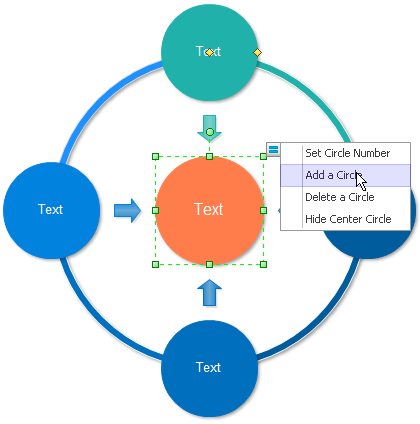12 Best Biotech ETFs To Buy

ETF issuers are ranked based on their estimated revenue from their ETFs with exposure to Biotechnology. Estimated revenue for an ETF issuer is calculated by aggregating the estimated revenue of the respective issuer ETFs https://1investing.in/ with exposure to Biotechnology. To get the estimated issuer revenue from a single Biotechnology ETF, the AUM is multiplied by the ETF’s expense ratio. However, over the short term, biotechnology hasn’t performed as well.
Investors seeking higher yields than what they can get from a savings account and who need near-term cash access should consider FLOT as an alternative to certificates of deposit. Selecting the ten best exchange-traded funds from a pool of thousands is akin to picking the ten most beautiful beaches on earth. There are too many to choose from, and everyone has their own unique preferences. Next year’s EPS is expected to rise 18.9% on sales growth of 12.2%. The forward P/E is attractive on the surface, but the company’s earnings can be erratic.
Continuum Advisory LLC Purchases Shares in iShares … – Best Stocks
Continuum Advisory LLC Purchases Shares in iShares ….
Posted: Sun, 10 Sep 2023 21:53:57 GMT [source]
No matter what’s going on in the economy, scientists will continue pressing forward for medical innovations. Given the practically limitless opportunities available, this sector enjoys massive pertinence. A fund’s historical performance offers no guarantees, but a fund with steady returns can be more reliable than a fund that has taken investors on a roller coaster. You may want to be more cautious if the fund has experienced sharp downturns that stand out from market downturns during the same time frame.
Find the best Biotech ETF
Investors should keep in mind that past performance is no guarantee of future results and that biotech ETFs can see greater fluctuations in price compared to other equity-based ETFs. Investors can research and analyze biotech ETFs with an ETF screener. To use the Seeking Alpha ETF screener to find biotech ETFs, an investor can select the «Sector Equity» asset class, then select the «Health» sub-class. From there, investors can seek and find the ETFs, and also review specific attributes, such as performance, holdings, yield, and risk.
- Biotech ETFs work by buying shares in many companies in that sector.
- We continually strive to provide consumers with the expert advice and tools needed to succeed throughout life’s financial journey.
- Our editorial team receives no direct compensation from advertisers, and our content is thoroughly fact-checked to ensure accuracy.
Each company in the index that the fund tracks has at least one drug in a Phase II or Phase III clinical trial. The passive management of the fund means it’s the cheapest of the funds on our list. Its expense ratio of 0.35% is equivalent to $3.50 for every $1,000 invested. The fund has more than $6 billion in assets, so investors need not worry about liquidity. The SPDR S&P Biotech ETF (XBI) is an index fund that aims to track the S&P Biotechnology Select Industry Index.
How Can I Buy Biotech ETFs?
We’re now out of the billion-dollar biotech ETFs and into the smaller and more boutique offerings. Though the strategy is narrow, the list of holdings is pretty diverse within this corner of the market. And though smaller, IDNA does enjoy $300 million in assets so it does have a decent amount of support across Wall Street. The iShares NASDAQ Biotechnology ETF was launched on February 5, 2001, and tracks 264 holdings. This iShares ETF is a diversified fund in that it provides exposure to biotechnology, pharmaceutical and life science tools and services.
There are 10 biotech ETFs that trade in the United States, excluding inverse and leveraged ETFs as well as funds with less than $50 million in assets under management (AUM). There’s clearly a lot of risk in this biotech ETF because of the structural components behind its makeup, as well as its unique and focused strategy just on cancer-related therapies. But if you think this is the area where there’s the most potential, CNCR could be worth a look. Generally speaking, actively managed ETFs like this get a bad rap. Countless articles have been written about how low-cost index funds regularly outperform managers who claim their costly «special sauce» makes for a better approach to investing. If you are interested in this specific corner of biotech, IDNA offers a way to do so without picking individual stocks.
Biotechnology companies strive to develop breakthrough drugs that can radically improve medical care and human wellbeing. These highly volatile equities can see stomach-churning price swings, driven by how their treatments fare in FDA clinical trials and real-world applications. Experts believe that mergers and acquisitions could be a highlight for the pharmaceutical industry in the coming years. PricewaterhouseCoopers (PwC) anticipates a series of deals falling within the $20 billion to $40 billion range in 2023, largely driven by the robust financial positions and liquidity of pharmaceutical companies. Experts in the field identify oncology and immunology as areas with substantial growth potential, which also emphasizes the investment opportunities in the pharmaceutical industry.
Vanguard Total Stock Market…
Additionally, ETFs enable flexibility in trading strategies, including options trading, short selling and stop orders. When you buy an exchange-traded fund, you get exposure to a wide range of securities without having to buy each individual asset separately. You indirectly own a proportional interest in the underlying assets held by the fund. This provides types of money in india an easy and cost-effective way to invest in a specific market segment, sector or investment theme. Investors seeking strong dividends, high-quality stocks and capital appreciation will find a lot to love in the Schwab U.S. Dividend Equity ETF. SCHD aims for a portfolio populated by companies with stronger fundamental metrics than their peers.
Volatility profiles based on trailing-three-year calculations of the standard deviation of service investment returns. Companies in this broad-based sector can produce healthy returns. On the other hand, ETFs trade on public exchanges just like individual stocks. That massive run has naturally caused the value of NTLA stock to represent a larger share of the portfolio than other stocks that haven’t fared as well. But even so, Intellia accounts for just over 1% of the total assets at present – proving that XBI is serious about diversification. When buying individual stocks, you’re pinning all your hopes on the success of one company.

While one company can deliver a knockout blow during its clinical trials, many others may fail miserably. To help mitigate the feast-or-famine nature of the underlying industry, the best biotech ETFs to buy offer a broad canvas of highly compelling enterprises. Amid the trying circumstances in the market right now, investors may be well served to target the best biotech ETFs to buy. Fundamentally, these exchange-traded funds benefit from permanent relevance.
The 7 Best Biotech ETFs to Buy for Exposure to the Healthcare Sector
NerdWallet does not and cannot guarantee the accuracy or applicability of any information in regard to your individual circumstances. Examples are hypothetical, and we encourage you to seek personalized advice from qualified professionals regarding specific investment issues. Our estimates are based on past market performance, and past performance is not a guarantee of future performance. This ETF tracks an index of U.S.-listed stocks of medical device companies, including Abbott Laboratories, Medtronic and Thermo Fisher Scientific.
Factoring in growth prospects, the forward P/E of 23.7 is more reasonable, but the company will need to deliver on earnings growth—or growth potential from the product pipeline—to break the stock up and out of this range. The company has a solid financial health rating, and analysts expect nearly 58% yearly EPS growth over the next five years. Sales have steadily increased since 2007, and they are expected to increase 22% in 2023 as well. The ARK Genomic Revolution Multi-Sector ETF came into existence on October 31, 2014, and tracks 45 holdings. This ETF follows companies that develop products such as CRISPR technology, bioinformatics, molecular diagnostics and stem cells.
- MiMedx makes bioimplants and biomaterial used for wound care, burns, surgeries, orthopedics and other functions.
- The fund’s lifetime returns are not the best, as it’s declined by an annualized rate of 11.56% over the past three years.
- Analysts expect EPS to grow by about 10% per year over the coming five-year period.
- The fund invests in primarily growth stocks of various market capitalizations.
- The well-diversified fund puts less than 10% of its shareholders’ money to work in its top-10 holdings.
- The fund seeks out firms from the ESG universe with financial stability, consistent cash flow and the potential for continuing dividend payments.
Since that time, buying between $80 and $70 has been a good entry point. Although there is no assurance the price will drop to those levels again. The stock has been declining in 2023 and is currently below its 52-week high.
Pros and Cons of Investing in Biotech
The smaller firms and their decidedly uncertain prospects but explosive upside potential definitely loom larger and have a meaningful sway on the portfolio. The fund has done well over the past few years, rising almost 60% in that time period (and topping all but one of its biotech ETF peers), compared with the S&P 500’s anemic rise of just 2.4%. XBI significantly underperformed in 2009 (when it was basically flat, compared with the S&P 500’s 23.5% increase), but has had good performance in other years. One nice attribute for investors is the fund’s 0.35% expense ratio–the lowest of all traditional biotech ETFs. Because Morningstar equity analysts follow just half of the assets in this ETF, we are not able to provide a fair value for it. PowerShares Dynamic Biotech & Genome (PBE) Like XBI, this is an equal-weight ETF with a higher exposure to small- and mid-cap biotechs, many of which are early-stage players with no drug on the market yet.
The 3 Best Biotech Stocks to Buy Now: September 2023 – InvestorPlace
The 3 Best Biotech Stocks to Buy Now: September 2023.
Posted: Mon, 04 Sep 2023 07:00:00 GMT [source]
Though shares have been volatile, a decline of 20% over the last 12 months puts this smaller biotech ETF ahead of many of its larger peers, and that may make it worth a look in 2022 as a result of this resilience. The second-place biotech fund at present, with about $6 billion in assets, is this SPDR fund. While it is similarly focused on gene-editing companies, development-stage drugmakers and high-tech diagnostic firms, it differs significantly from IBB in its structure.
In addition, this ETF tracks a dynamic (as in, changing often) benchmark that selects and ranks biotech stocks based on capital appreciation. The index is governed by a quantitative-active model that aims to surpass the returns of traditional indexes by investing in stocks that display favorable fundamental growth, attractive valuations, and momentum traits. This ETF charges a 0.63% expense ratio, which is higher than several competing ETFs, but eminently reasonable for a fund that can outperform its rivals.
Based on the reversion to the mean principal, international stocks are due for a rebound. The stocks above were selected by an experienced financial analyst, but they may not be right for your portfolio. Before you decide to purchase any of these stocks, do plenty of research to ensure they are aligned with your financial goals and risk tolerance.
